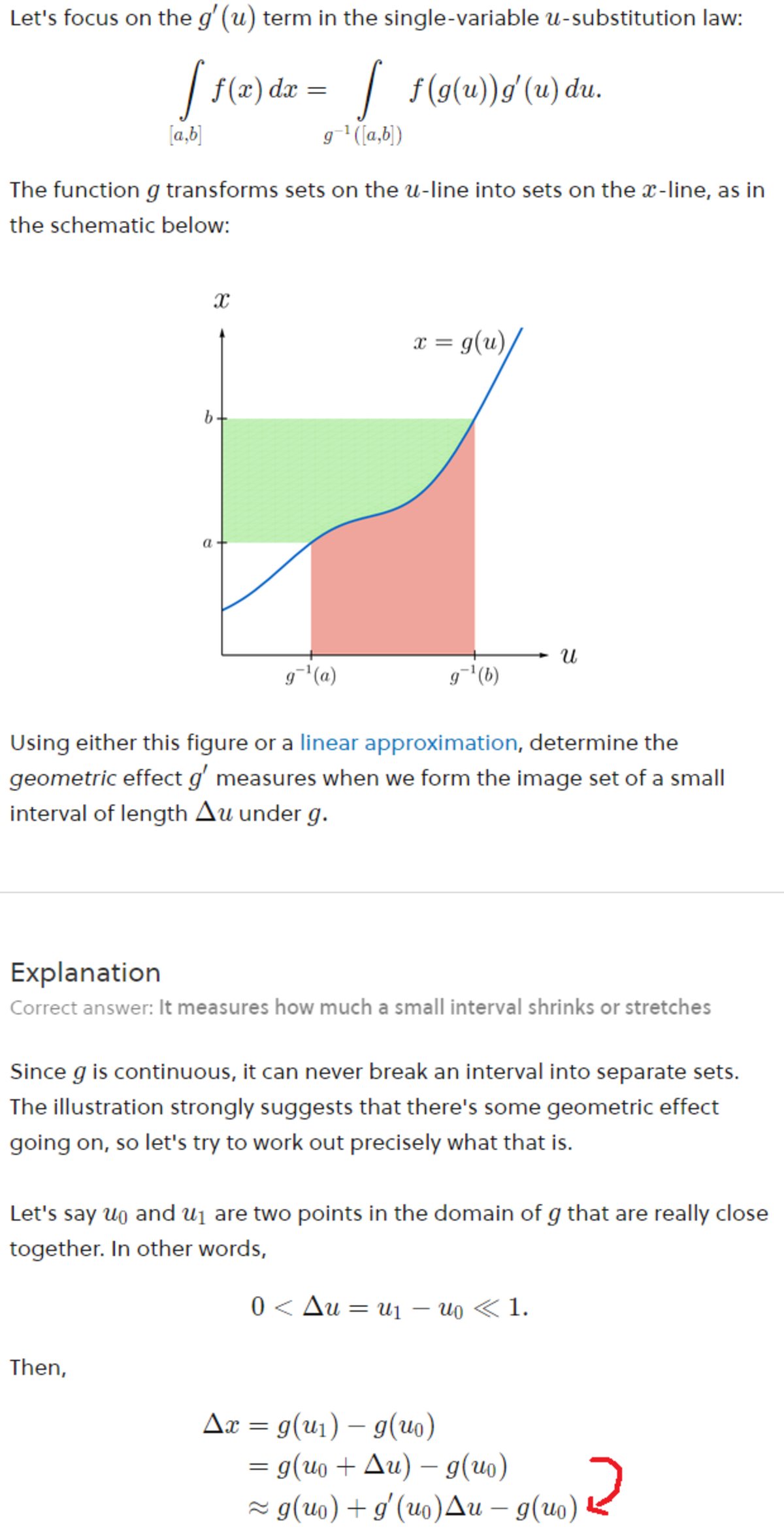Substitution easy question
Hello, could anyone help me a bit? I don't know how I could determine that g' measures how much a small interval shrinks or stretches from that graph. And the step in derivation marked with red arrow.

No vote yet
1 vote
Easy Math Editor
This discussion board is a place to discuss our Daily Challenges and the math and science related to those challenges. Explanations are more than just a solution — they should explain the steps and thinking strategies that you used to obtain the solution. Comments should further the discussion of math and science.
When posting on Brilliant:
*italics*or_italics_**bold**or__bold__paragraph 1
paragraph 2
[example link](https://brilliant.org)> This is a quote# I indented these lines # 4 spaces, and now they show # up as a code block. print "hello world"\(...\)or\[...\]to ensure proper formatting.2 \times 32^{34}a_{i-1}\frac{2}{3}\sqrt{2}\sum_{i=1}^3\sin \theta\boxed{123}Comments
Hi Nezajem123 Nezajem123, I believe you're referring to this problem.
the reasoning goes like this:
The (infinitesimal) change in x (Δx) is the difference between the images of the corresponding endpoints of the interval along the u direction under g. In short, Δx=g(u1)−g(u0) with Δu=u1−u0.
We want to get a relationship between Δx and Δu from this expression. We start by writing u1 as u0+Δu, which implies Δx=g(u0+Δu)−g(u0). Because Δu is so very small, we can use a linear approximation to replace g(u0+Δu) by g(u0)+g’(u0)Δu. This implies that Δx≈g(u0)+g’(u0)Δu−g(u0), and so Δx≈g’(u0)Δu. Another way of expressing this is as Δx/Δu=g’(u0), so g’(u0) measure how much g stretches/shrinks small intervals along the u-direction into small intervals in the x-direction.
Hope that helps!
Log in to reply
Thank you very much. The step I didn't catch is linear approximation, another quiz solved it for me :) https://brilliant.org/practice/linear-approximation/?p=1